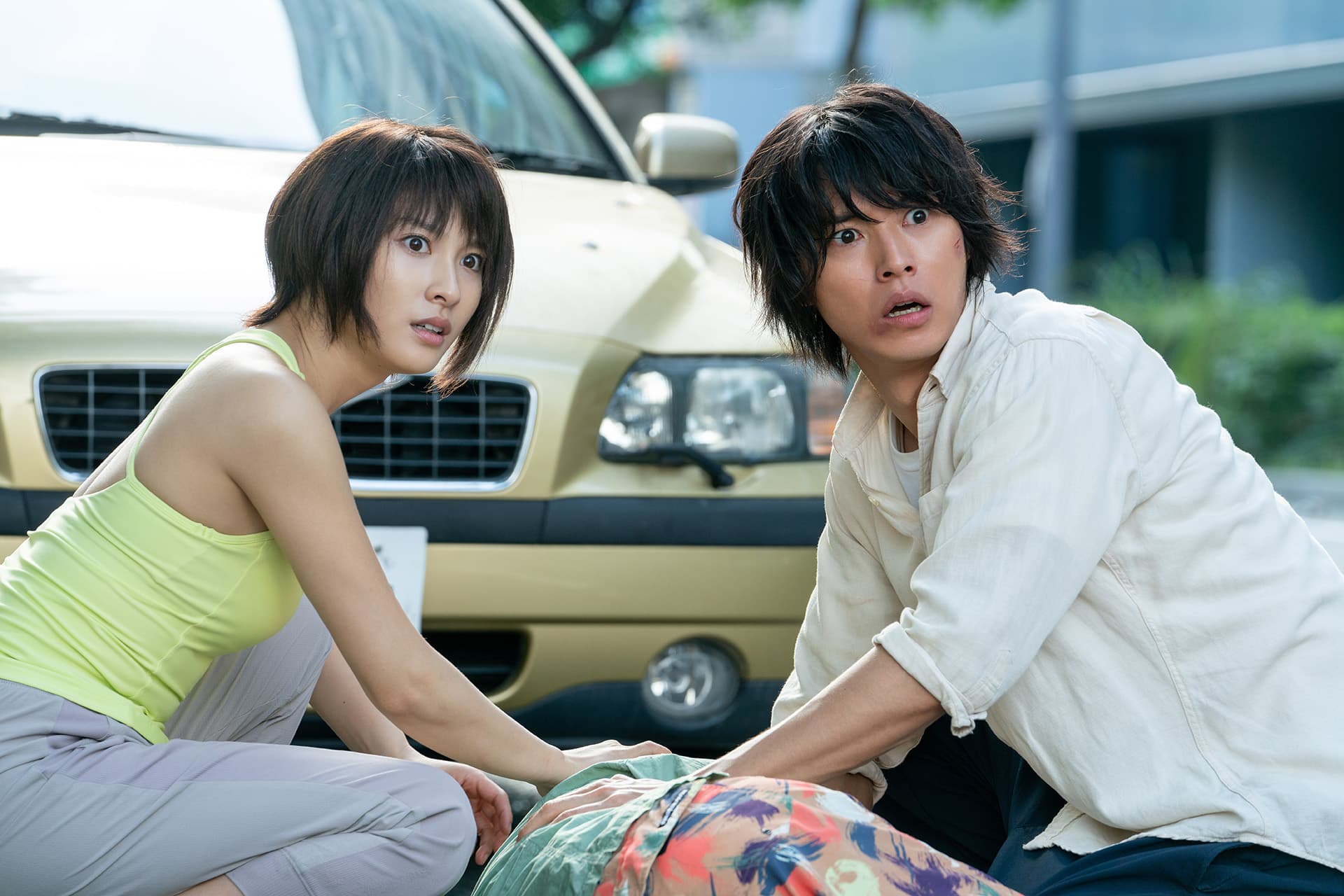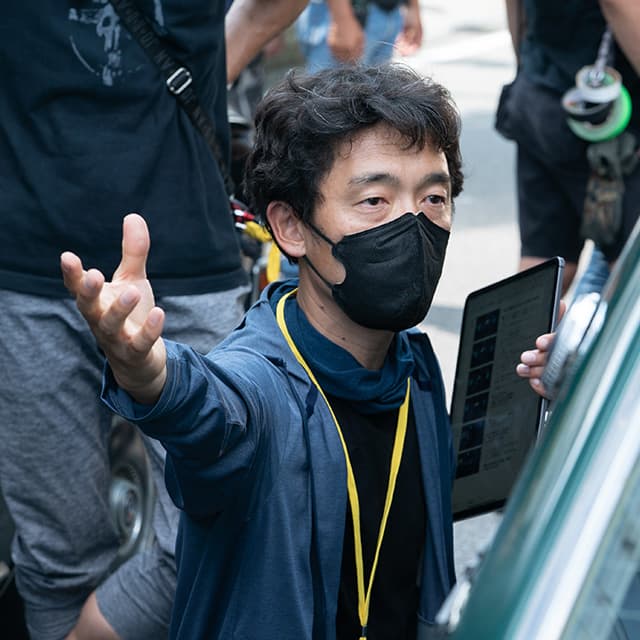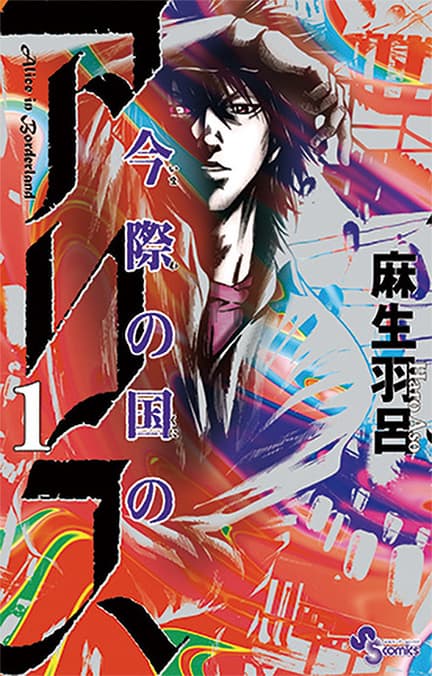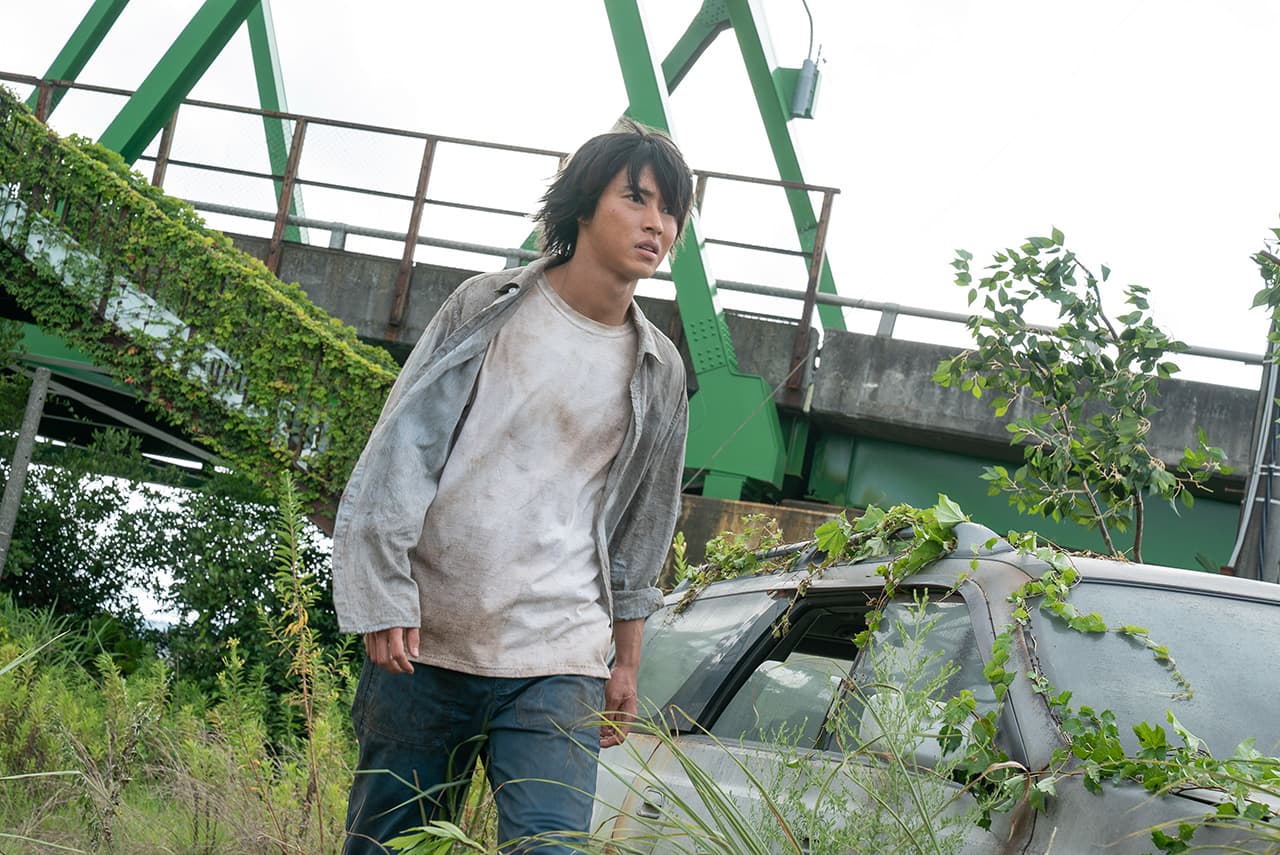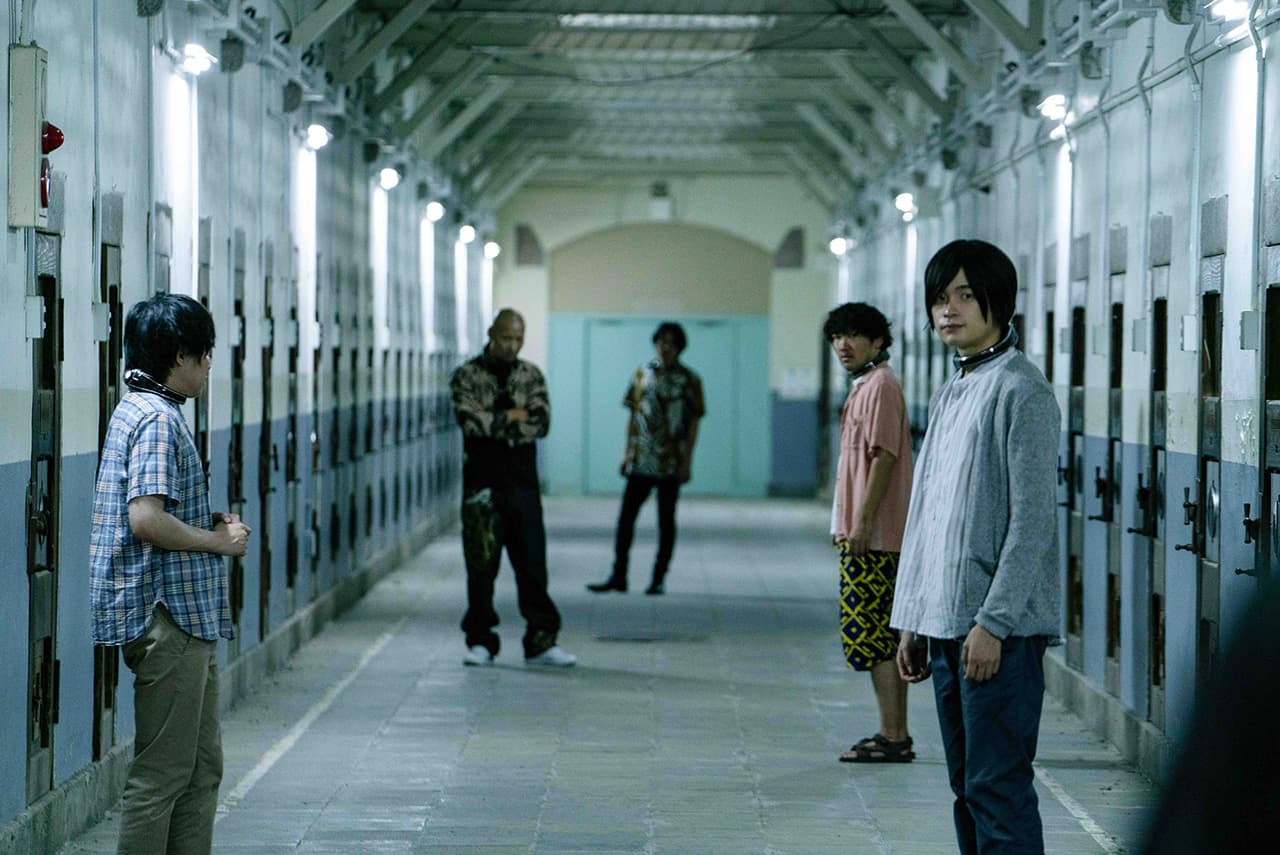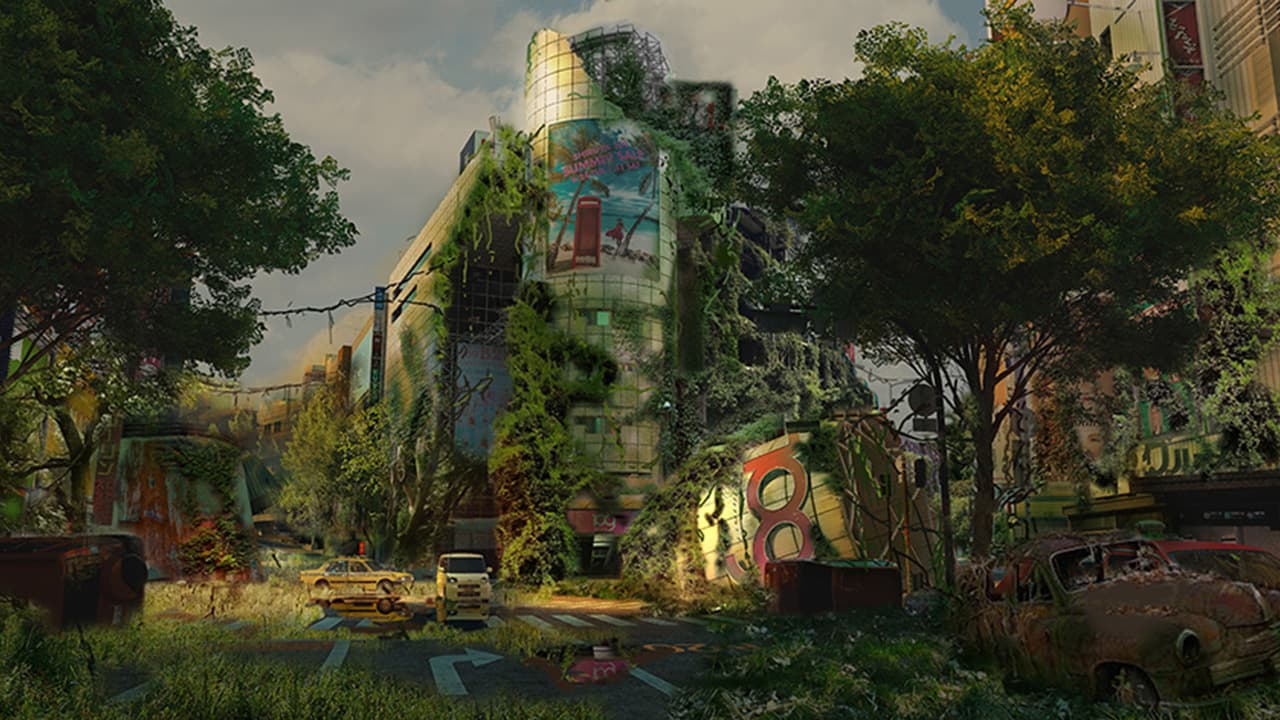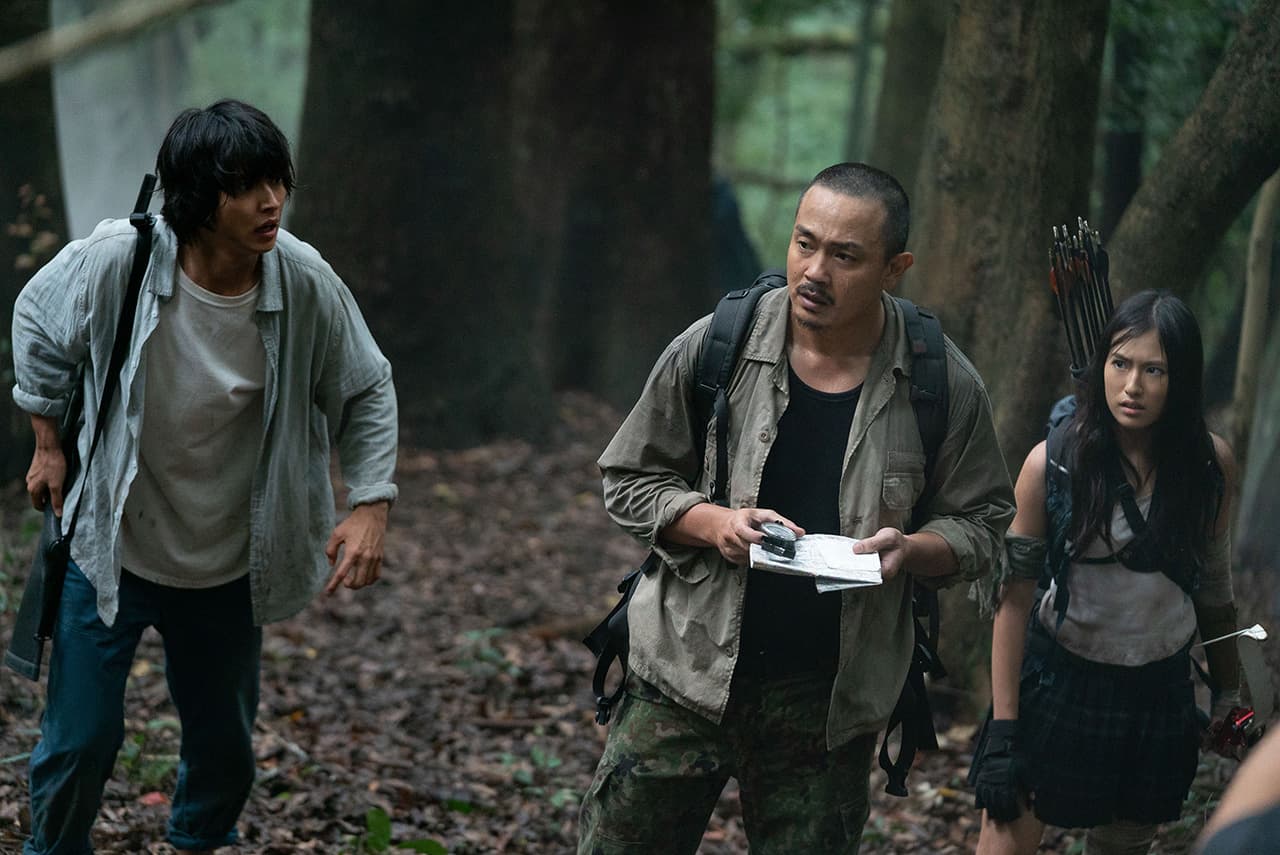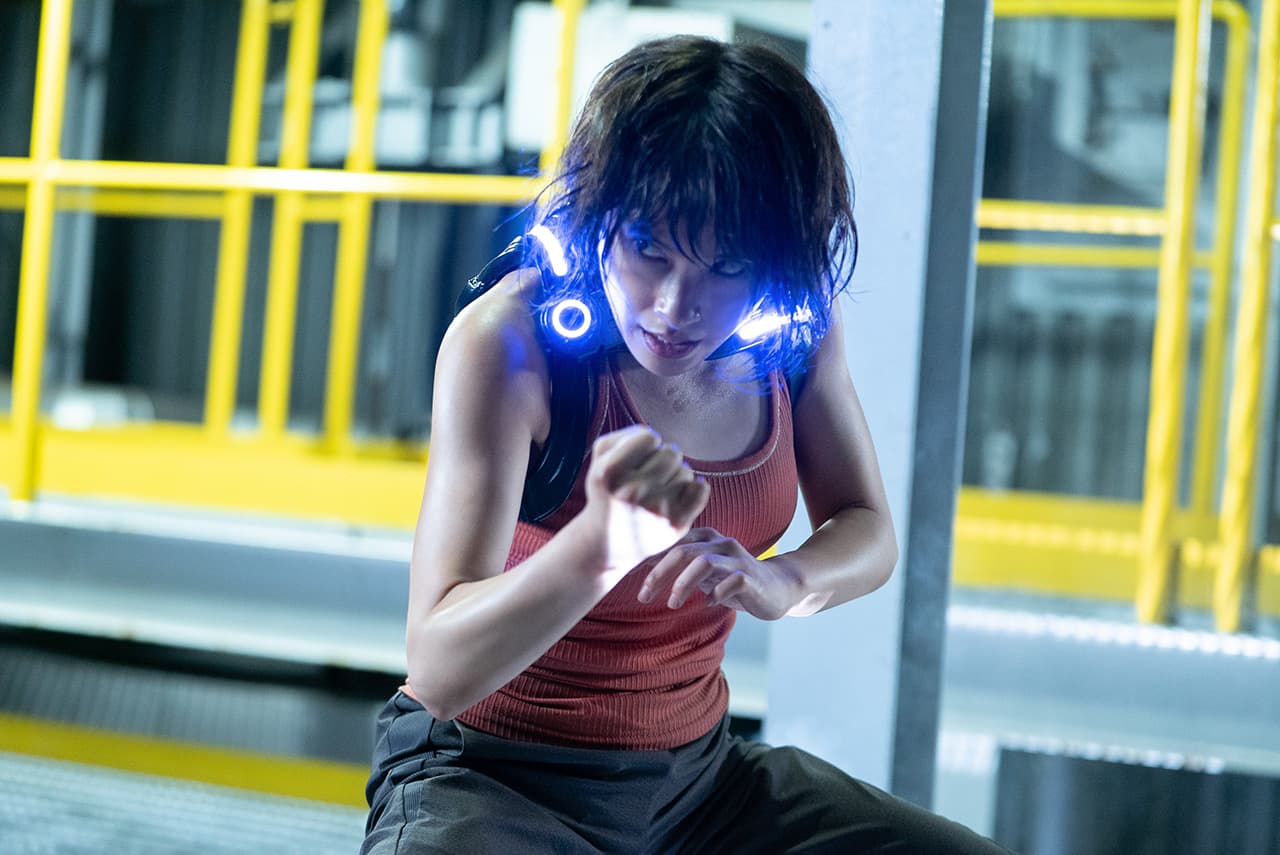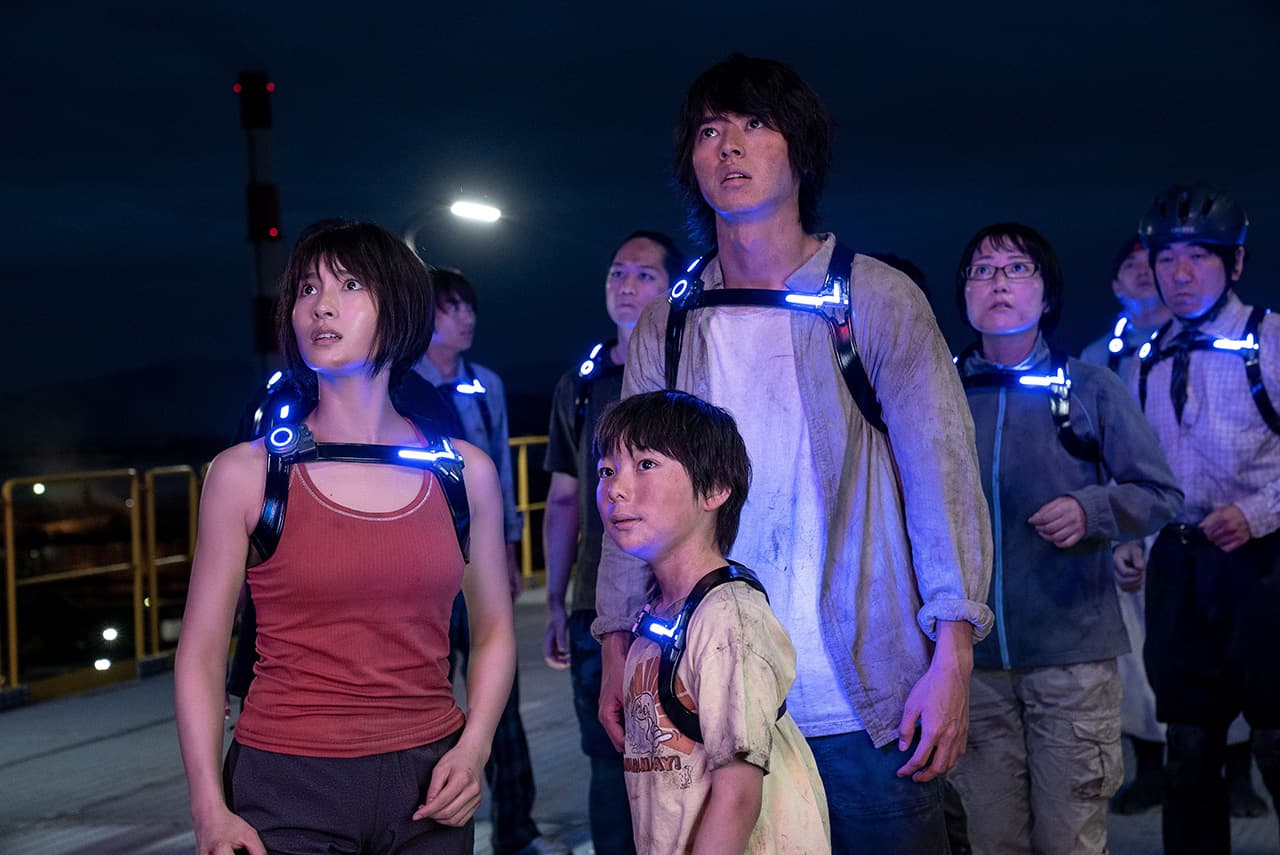The great number of things in the production design is also something to look out for. For the Osmosis game that features Kyuma, filming was done on location at a container port for approximately one month. This was the part of Season 2 that took the most time and energy. Said Onishi: “It was important for Arisu and the others to be thrown about within a huge place. If it were a small place, it wouldn’t be the Borderland. Although the sheer number of containers was slightly enhanced with VFX, we asked to have as many containers as possible on site. It was a large-scale shoot, with containers being moved around depending on the scene being shot.”
The mind game Solitary Confinement, which Chishiya participates in, was filmed at the former Nara Prison. The place is characterized by its radially extending confinement wards and the cells lined up in them, but of course, instead of being used as-is, it was modified to suit the Borderland. Since the opening and closing of cell doors represent judgments, all the doors were equipped with plates. Hundreds of plates were prepared for this purpose, and the preparation process, which was unique to this work, was to create even the parts that are not shown on-screen.
The Boiling Death game, which starts abruptly at the stadium Heiya visits, is depicted in a terrifying way, with boiling water suddenly gushing out and with many enormous columns of water so big they could destroy the arena. The hot spring, which appears later in an important scene with Arisu and Usagi, is the ruins of a collapsed stadium with debris scattered about. It seems like a dark place at first glance, but it really shows off the wisdom of the production design team.
“We started creating the debris six months ago, and it took two to three months to build the set,” said Saito. “After that was completed, we placed the debris. Each piece of debris was 2 to 3 meters in size, and we made hundreds of them. It’s a set that’s difficult to measure, so I first made the whole image as a miniature set. Then, I numbered each piece of debris scattered there and made a blueprint for each shape. The molding craftsmen made molds based off of those, so I had to show the completed form first. Since the shapes were not simple shapes like triangles or squares, they can’t be made into drawings. Again, quantity was key here. The goal was to make a lot of debris. We had to control everything from shape and texture to quantity. It took a massive amount of effort.”
Sato praised Saito’s work, saying, “That debris set is so amazing that it will go down in the history of Japanese cinema.” It was so well made that it was used in other scenes, and since it seemed a waste to dispose of it, so it was taken over for another movie. Saito said: “This debris felt like a sculpture made piece by piece. This set is also a sculptural, magnificent, experimental world. You could call it a fist-of its-kind piece of work in films.”



